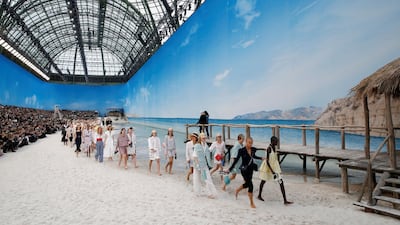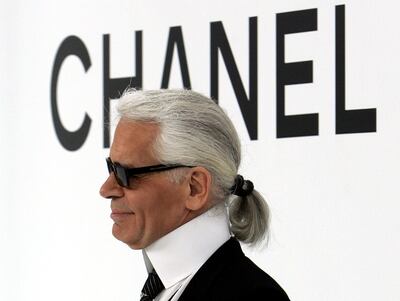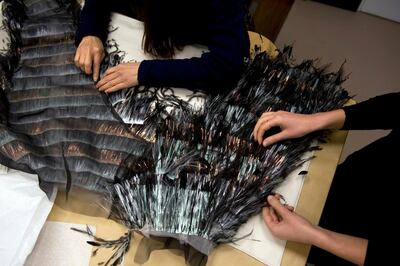I am sitting in Paris’s Grand Palais, rigid with anticipation. Kristen Stewart saunters in and takes a seat at a table in the centre of the casino-themed space; she is followed by a stream of celebrities – Vanessa Paradis, Rita Ora, Lily-Rose Depp and Julianne Moore – all players in an elaborate performance, resplendent in custom-designed Chanel couture.
The music builds slowly, a pulsing beat that hits deep in the solar plexus. The models make their entrance, weaving their way past the star-studded centrepiece and up and around the two-level space. There is so much to see, I don’t know where to look.

A few years later, I find myself in Hamburg’s striking Elbphilharmonie concert hall, an incandescent, ivory-hued cave fitted with more than 10,000 acoustic panels that create a textured, coral-like effect on the walls. Celebrated cellist, composer and producer Oliver Coates leads the orchestra through a stirring score created specifically for Chanel’s 2017 Métiers d’Art presentation. Models descend from the upper levels of the concert hall, weaving their way downward until they reach the stage.
A nautical theme runs through the collection, in homage to the concert hall’s location on the banks of the River Elbe, manifesting in traditional Breton hats, wide stripes and bags shaped like mini shipping containers. It is a moving, masterful marriage of high fashion and music.
Only Karl Lagerfeld could put on such a show.
There was something electrifying about attending one of the maestro’s performances. Whether set in a purpose-built superstore, elaborate pop-up restaurant, branded rocket ship or on the streets of Havana, Lagerfeld’s dramatic displays transported his audiences to a fantastical Chanel-infused world. He was a master of theatre, and while my peers squabbled over seats on the front row, I was always just happy to be there to witness the magic.
He was a divisive figure, for sure. He had an acerbic wit, an enduring disdain for “fat” people and unsavoury views on immigration. He himself would admit that he eventually became a caricature of his own creation: “When I was younger I wanted to be a caricaturist. In the end I became a caricature,” he said.
But none of that detracts from his genius, or the impact he had on the fashion industry over the course of his five-decade career. When you came up close to one of his couture creations, you could not help but marvel at the intricacy and ingenuity of the work. Sequinned flowers bloomed over dresses, tulle was shredded into feathery threads, trademark tweed suits were reworked in astonishing ways, and hemlines and silhouettes were tweaked to create fresh iterations of age-old favourites. He joined a faltering French fashion house in 1983 and helped reinstate it to the very highest echelons of the sartorial world.
Around the world, people frantically bought into his vision – in the Chanel store on Paris’ Rue Cambon, queues of eager tourists would patiently await their turn to pick up a piece of the old Lagerfeld magic.
He was the last remaining figurehead of a golden age in fashion – an era dominated by luminaries such as Yves Saint Laurent, Azzedine Alaia and Hubert de Givenchy, who all, in their own way, changed the way women dress.
The house of Chanel will of course endure, and those crowds will continue to flock to Rue Cambon, but an era has ended all the same.




